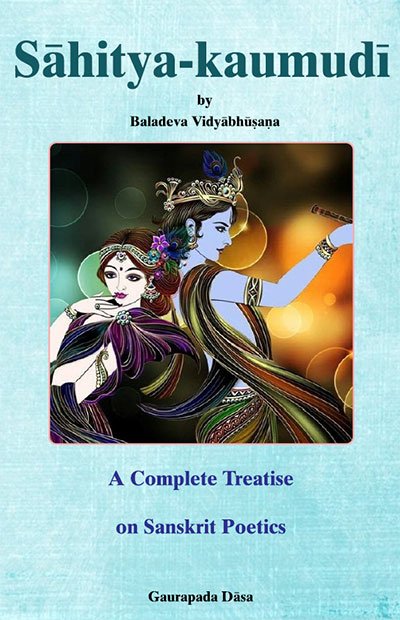Sahitya-kaumudi by Baladeva Vidyabhushana
by Gaurapada Dāsa | 2015 | 234,703 words
Baladeva Vidyabhusana’s Sahitya-kaumudi covers all aspects of poetical theory except the topic of dramaturgy. All the definitions of poetical concepts are taken from Mammata’s Kavya-prakasha, the most authoritative work on Sanskrit poetical rhetoric. Baladeva Vidyabhushana added the eleventh chapter, where he expounds additional ornaments from Visv...
Text 2.35
अभिधा-मूला व्यञ्जना दर्श्यते,
abhidhā-mūlā vyañjanā darśyate,
Now Suggestiveness based on Denotation is expounded (abhidhāmūlā śābdī vyañjanā):
anekārthasya śabdasya vācakatve niyantrite |
saṃyogādyair avācyārtha-dhī-kṛd vyāpṛtir añjanam ||2.19||
aneka-arthasya—which has more than one meaning; śabdasya—when a word’s; vācakatve—being literally expressive; niyantrite—is restricted; saṃyoga-ādyaiḥ—by saṃyoga and so on (see below); avācya-artha—of a meaning that is not literally expressive; dhī-kṛt—which brings about the thought; vyāpṛtir—the rhetorical function (vyāpṛti = vyāpāra); añjanam—is called añjanam (vyañjanā).[1]
When a word which has more than one meaning and which is literally expressive is restricted, by the factors beginning from saṃyoga (possession), the rhetorical function which causes the thought of a meaning that is not literally expressive is called vyañjanā.
ādya-śabdād viyogādayaḥ. tad uktam.
Other factors are viyoga (disjunction) and so on. The factors are enumerated as follows.
Commentary:
Mammaṭa was the first poetical rhetorician to state the above rule. The gist is this: When a word which has more than one meaning is narrowed down to one meaning, due to one of the factors expounded below, such as the context, any other meaning is no longer in the scope of Denotation, so that if another meaning of that word is thought of, and if it makes sense, it is not called a literal double meaning (śleṣa) (9.29), since it is no longer literally expressive, rather it is called an implied double meaning (vyaṅgya artha), which arises in the mind by the force of Suggestiveness.
